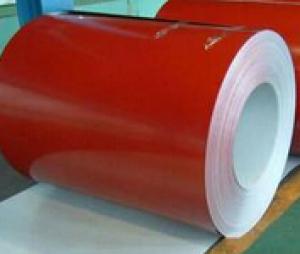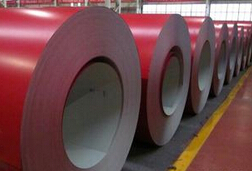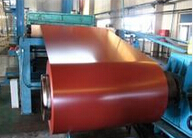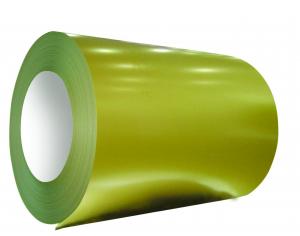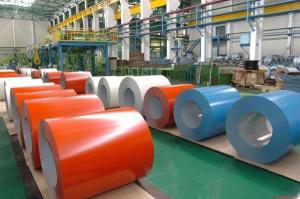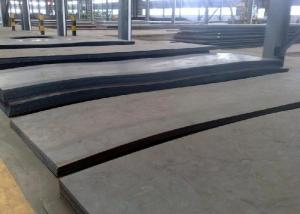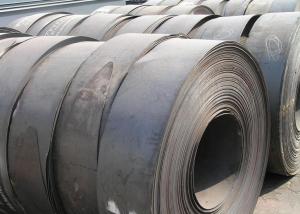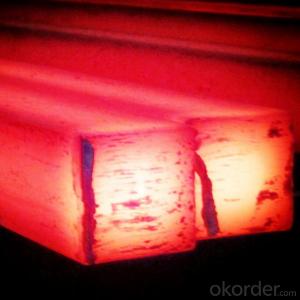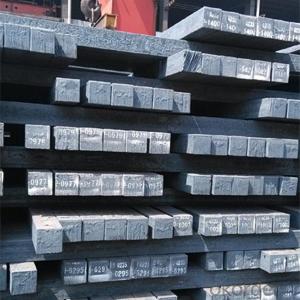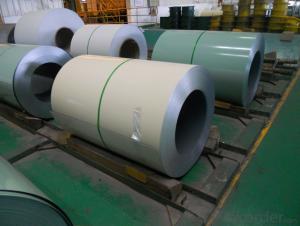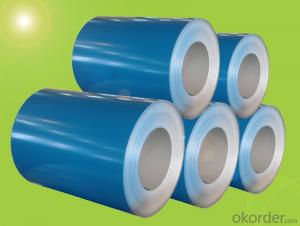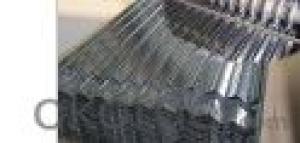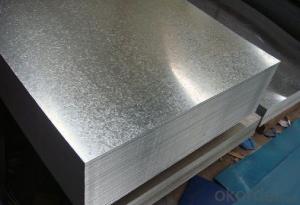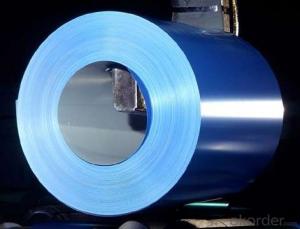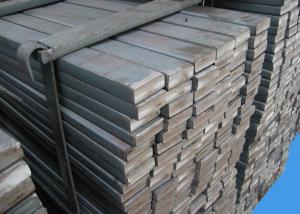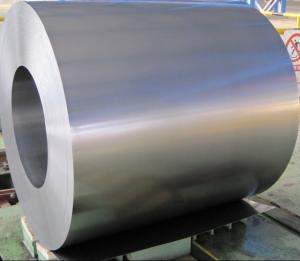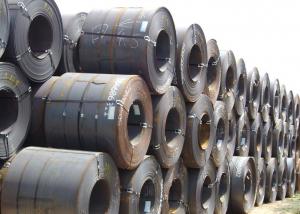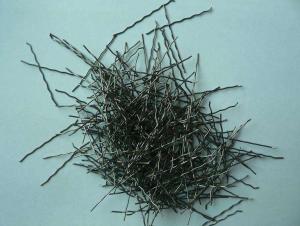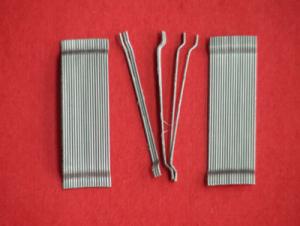High Durability PPGL Coil
- Loading Port:
- China Main Port
- Payment Terms:
- TT OR LC
- Min Order Qty:
- -
- Supply Capability:
- -
OKorder Service Pledge
OKorder Financial Service
You Might Also Like
Specification
1. Thickness: 0.3-0.8mm
2. Width: 914-1250mm
3. Inner Diameter: 508mm
4. Weight of Steel Coil: 3-15MT
5. Available Dipped Layer: 50-150g/m2
6. Surface Texture: Normal Coated
7. Type of coating structure: 2/1 Coat the top surface of the steel sheet twice, coat the bottom surface once, and bake the sheet twice.
8. Front side paint thickness: 15-25μm (bottome paint + top paint)
9. Back side paint thickness: 5-10μm
Mechanical Properties
1. Mechanical properties of base metals
Grade | Tensile Test | ||
Yield Strength MPa | Tensile Strength MPa | Elongation A80mm % ≥ | |
DC51D+AZ | 280-325 | 320-500 | 22 |
DC52D+AZ | 240-300 | 270-420 | 26 |
DC53D+AZ | 140-260 | 270-380 | 30 |
2. Common performance of front coating
(1). Thickness: ≥20μm
(2). Pencil Hardness: 2H
(3). 60° specular glossiness of coating: >60
(4). 180°bend: ≤3T
(5). Impact: ≥9J
(6). Salt Fog Resistant: ≥500h
(7). Color difference: <3ΔE
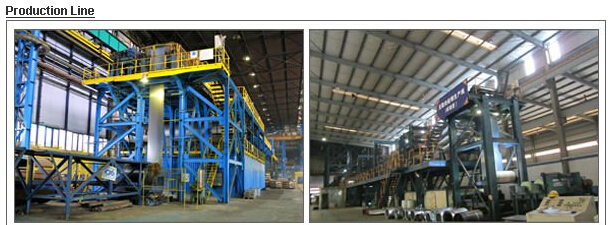
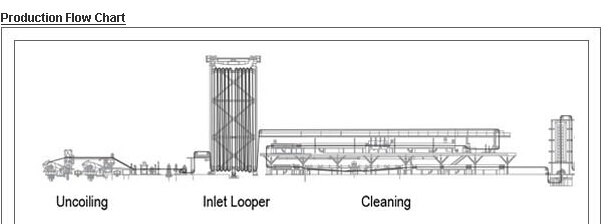
- Q: How is steel used in the production of medical devices?
- Steel is used in the production of medical devices due to its strength, durability, and resistance to corrosion. It is commonly used for manufacturing surgical instruments, implants, and various medical equipment such as scalpel blades, forceps, needles, and stents. The properties of steel make it ideal for these applications as it provides reliability, precision, and ease of sterilization, ensuring the safety and effectiveness of medical devices used in patient care.
- Q: How is steel sheet metal fabricated?
- Steel sheet metal is fabricated through a process called sheet metal forming, which involves cutting, bending, and shaping steel sheets into desired shapes and sizes using various tools and techniques like shearing, punching, welding, and folding.
- Q: What are the different types of steel pipes and tubes?
- There are several types of steel pipes and tubes, including seamless pipes, welded pipes, black steel pipes, galvanized pipes, and stainless steel pipes. Each type has its own unique characteristics and applications.
- Q: What are the different types of steel gratings and stair treads available?
- There are several different types of steel gratings and stair treads available, including welded steel gratings, press-locked gratings, riveted gratings, and molded gratings. Each type has its own unique design and construction, offering various benefits and applications. Similarly, stair treads can be constructed using these different types of gratings, providing options for enhanced safety, durability, and aesthetics in various industrial, commercial, and residential settings.
- Q: How is steel used in the production of electrical appliances and wiring?
- Steel is commonly used in the production of electrical appliances and wiring as it provides a strong and durable framework for various components. It is often used in the construction of appliance casings, motor housings, and brackets, ensuring the safety and protection of internal electrical components. Additionally, steel is used in electrical wiring as a support structure, providing strength and stability to carry and distribute electricity effectively.
- Q: What are the different types of steel products used in the telecommunications industry?
- There are several types of steel products used in the telecommunications industry, including steel poles, towers, cables, and enclosures. These products are essential for the construction and installation of telecommunication infrastructure, providing support, stability, and protection for various equipment and cables used in the industry.
- Q: What are the advantages of using steel wire?
- There are several advantages of using steel wire. Firstly, steel wire is incredibly strong and durable, making it suitable for a wide range of applications. It can withstand heavy loads, resist deformation, and maintain its structural integrity over time. Secondly, steel wire has high tensile strength, meaning it can withstand pulling forces without breaking. This makes it ideal for use in industries such as construction, automotive, and manufacturing. Additionally, steel wire is resistant to corrosion, which increases its lifespan and reduces maintenance costs. Lastly, steel wire is flexible and versatile, allowing it to be easily shaped and manipulated for various purposes. Overall, the advantages of using steel wire include its strength, durability, resistance to corrosion, and versatility.
- Q: How are steel tubes used in plumbing and HVAC systems?
- Steel tubes are commonly used in plumbing and HVAC systems due to their durability and strength. They are utilized for transporting water, gas, and other fluids within the building. Steel tubes are also used for the distribution of hot and cold air in HVAC systems. Their resistance to rust and corrosion makes them an ideal choice for these applications, ensuring longevity and reliability in plumbing and HVAC systems.
- Q: How are steel forgings used in the production of power generation equipment?
- Steel forgings are used in the production of power generation equipment due to their exceptional strength, durability, and reliability. These forged components, such as turbine rotors, shafts, and casings, are able to withstand the extreme conditions and heavy loads associated with power generation. The forging process ensures a uniform grain structure, eliminating weak points and improving the overall performance and longevity of the equipment. Additionally, steel forgings can be customized to meet specific design requirements, allowing for efficient and safe power generation operations.
- Q: What are the different types of steel wire ropes and their uses in offshore drilling operations?
- There are several types of steel wire ropes commonly used in offshore drilling operations. These include drilling lines, sandline cables, and guy wires. Drilling lines are heavy-duty wire ropes designed to support the weight of the drill string and transport drilling fluids. They are used to lower and raise the drill bit, as well as to rotate the drill string during drilling operations. Sandline cables, on the other hand, are lighter wire ropes used for well servicing and workover operations. They are primarily used to lower and retrieve equipment, such as pumps and tools, into and out of the wellbore. Lastly, guy wires are steel wire ropes used to support and stabilize offshore drilling platforms or structures. They help to counterbalance the weight and forces acting on the structure, ensuring stability and safety. Overall, steel wire ropes play a crucial role in offshore drilling operations, providing strength, durability, and reliability necessary for various tasks and applications.
Send your message to us
High Durability PPGL Coil
- Loading Port:
- China Main Port
- Payment Terms:
- TT OR LC
- Min Order Qty:
- -
- Supply Capability:
- -
OKorder Service Pledge
OKorder Financial Service
Similar products
Hot products
Hot Searches
Related keywords
